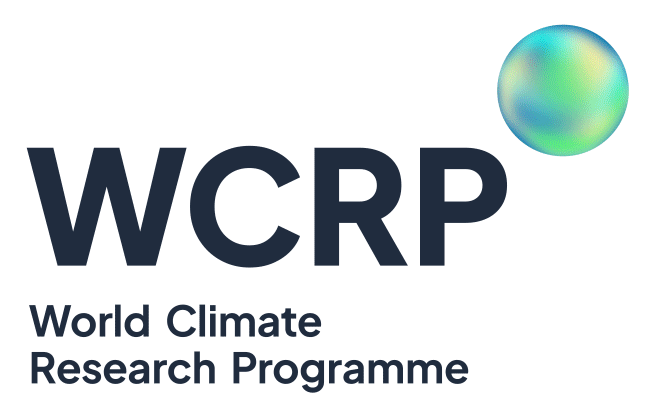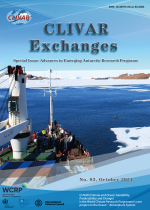International workshop on interdecadal variability of the global monsoons
Nanjing, China
Monday, 10 September, 2012 - Wednesday, 12 September, 2012
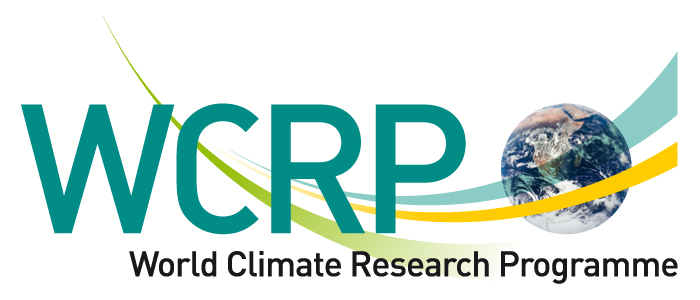

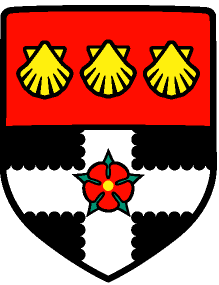
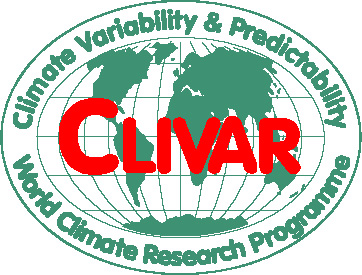
Venue: Nanjing University of Information Science and Technology (NUIST)
Organizers: Dr Andy Turner /// Prof. Bin Wang /// Prof Carlos Ereno /// WCRP CLIVAR Asian-Australian Monsoon Panel /// local hosts Prof. Jinzhong Min & Dr Weiyu Pan of NUIST.

Meeting goals
Agenda
Poster presentations
Registration form
Registration fee
Logistic information
Meeting goals
Understanding interdecadal variability of the climate system is a prerequisite for attribution of present and future changes under anthropogenic forcing. The global monsoon systems (Asian-Australian; West African; American Monsoons) exhibit important decadal variations with potential large socio-economic impacts, but there is little consensus on the character of this variability. Recent studies have highlighted interdecadal variability in:
- The various regional monsoons;
- Features embedded in the monsoon, such as tropical cyclones and monsoon depressions;
- The strength of monsoon teleconnections, impacting the prospect for seasonal prediction.
Major objectives are (a) review evidence of monsoon interdecadal variability collectively and regionally; (b) discuss how these variations are linked to each other and other major modes of interdecadal variability in the global oceans such as the PDO, IPO, or AMO, and to climate change; (c) examine possible mechanisms underlying these interdecadal variations, including in simulations and numerical experiments that address driving physical processes with the goal of assessing the predictability of monsoon interdecadal variations.
Sessions will last around half a day each, consisting of invited speaker(s) and a period of discussion. The majority of scientific presentations will be made via interactive poster sessions:
- Session 1: Monsoon decadal variability in the modern observational era (19th/20th centuries).
- Session 2: What do palaeo-modelling and proxy data tell us about monsoon interdecadal variability?
- Session 3: Interconnections between the regional monsoons and other modes of climate variability.
- Session 4: Mechanisms for decadal modulation of the monsoon.
- Session 5: Using our knowledge of decadal variability to further monsoon prediction and projection.
The workshop will provide an overview of the state of knowledge and emerging issues in monsoon interdecadal variability and promote coordinated experimental designs to test possible causes and explore predictability. The workshop will be of potential interest to climate scientists of the tropical monsoon regions, as well as those with expertise in ENSO and multi-decadal ocean variability, the seasonal forecasting, climate impacts and PAGES communities. We hope to promote current/palaeo-climate collaborations.
We expect attendance of around 80 international scientists including graduate students and early career researchers. Some limited funding may be available for attendees from some countries. Please send a short (max 2 page) CV and statement explaining your interest if you wish to be considered for funding.
The call for abstracts is now open until 1 May 2012. Please specify the main session of interest.
For further information, to be added to the list of interested participants or send an abstract please contact Dr Andy Turner a.g.turner@reading.ac.uk, cc Prof Bin Wang wangbin@hawaii.edu.
Agenda
Final workshop agenda in  format
format
|
Monday 10 September: Review the present observational evidence of monsoon interdecadal variability |
|||
| 8:30-9:00 | local host and workshop introduction | ||
|
Session 1: Monsoon decadal variability in the modern observational era |
|||
|
9:00-10:30 |
Invited talks (session timekeeper Nicholas Jourdain) |
||
|
Xiu-Qun YANG |
|||
|
H ANNAMALAI |
Drivers of interdecadal variability of the Asian Summer Monsoon |
||
|
Zhaobo SUN |
Interdecadal Variation Processes of East Asia Summer Monsoon in the 1970's and their relation to the AO |
||
|
10:30-11:30 |
poster session and morning break |
||
|
Posters on topics discussing:
|
|||
|
11:30-12:30 |
Discussion: observed decadal variability of the monsoon (chaired by Ken Sperber with panelists Bin Wang, H Annamalai and Zhaobo Sun) |
||
|
|||
|
12:30-14:00 |
Buffet lunch |
||
|
Session 2: What do palaeo-modelling and observation tell us about monsoon interdecadal variability? |
|||
|
14:00-14:30 |
Poster introductions |
||
|
Each poster author to present a single slide introducing their poster for 1-2 minutes |
|||
|
14:30-15:30 |
Invited talks (session timekeeper Tianjun Zhou) |
||
|
Ping ZHAO |
|||
|
Dongxiao WANG |
Decadal variability of the climate over the South China Sea inferred from measurement and proxy data |
||
|
15:30-16:30 |
Poster session and afternoon break |
||
|
Posters on topics discussing:
|
|||
|
16:30-17:30 |
Discussion: what can palaeo-study teach us about the global monsoons? (led by Andy Turner with panelists Ping Zhao, Dongxiao Wang, Tianjun Zhou and Akio Kitoh) |
||
|
|||
|
Sub-session: our current skill at monsoon modelling |
|||
|
17:30-18:00 |
invited talk |
||
|
Ken SPERBER |
quality of monsoon simulation in the CMIP5 and CMIP3 integrations |
||
|
18:00 |
Ice-breaker and evening reception with conference dinner |
||
|
|
|||
|
Tuesday 11 September: Connection between interdecadal monsoon variations and other major modes of interdecadal variability (such as PDO, IPO, or AMO) and the effects of climate change |
|||
|
Session 3: Interconnections between the monsoon regions and decadal variability in the context of climate change |
|||
|
9:00-11:00 |
Invited talks (session timekeeper Bin Wang) |
||
|
Nagaraju CHILUKOTI / K ASHOK |
Decadal changes in the relationship between the Indian and Australian summer monsoons |
||
|
Yihui DING |
|||
|
Bodo AHRENS |
|||
|
Bin WANG |
|||
|
11:00-12:00 |
Poster session and morning break |
||
|
Posters on topics discussing:
|
|||
|
12:00-13:00 |
Discussion: Interconnection and co-variability of the monsoons (led by Bin Wang with panelists, Yihui Ding, Xiu-Qun Yang and Bodo Ahrens) |
||
|
|||
|
13:00-14:00 |
|
||
|
Session 4: Mechanisms for decadal modulation of the monsoon |
|||
|
14:00-16:00 |
Invited talks (session timekeeper Andy Turner) |
||
|
Buwen DONG |
|||
|
Jianping LI |
Decadal change in annular modes and their linkage with East Asian monsoon |
||
|
Zhiwei WU |
|||
|
Jacob SCHEWE |
|||
|
16:00-17:00 |
Poster session and afternoon break |
||
|
Posters on topics discussing: |
|||
|
|||
|
17:00-18:00 |
Discussion: mechanisms and model representation of interdecadal modes (led by Jianping Li with panelists Buwen Dong, Zhiwei Wu and Jacob Schewe) |
||
o Do we have enough observed data to test our models? o Do we know enough about the processes involved in these phenomena? |
|||
|
18:00 |
Buffet dinner |
||
|
|
|||
|
Wednesday 12 September: Decadal monsoon prediction |
|||
|
Session 5: Using our knowledge of decadal variability to further monsoon prediction |
|||
|
9:00-10:30 |
Invited talks (session timekeeper Matthieu Lengaigne) |
||
|
Noel KEENLYSIDE |
Near-term climate prediction: new opportunities and challenges |
||
|
Harry HENDON |
|||
|
Kyung-Ja HA |
Interdecadal Change in the Relationship between ENSO and the Intraseasonal Oscillation in East Asia |
||
|
10:30-11:30 |
Poster session and morning break |
||
|
11:30-12:30 |
Discussion: barriers to better dynamical prediction and the impact of ENSO diversity (led by Harry Hendon with panelists Noel Keenlyside, Kyung-Ja Ha and Matthieu Lengaigne) |
||
o The IOD or Modoki-mode ENSO. o Role of the mean state. |
|||
|
12:30-13:00 |
Synthesis of rapporteurs’ comments and meeting wrap-up |
||
|
|||
|
13:00 |
Buffet lunch |
||
Poster presentations
Hua CHEN: Decadal Global Monsoon in CCSM3
Deepesh JAIN: Interdecadal variability of the Indian monsoon in an atmospheric general circulation model
Nicolas JOURDAIN: Variability of the Tropospheric Biennial Oscillation
Hisayuki KUBOTA: Interdecadal variability of western North Pacific summer monsoon through the Pacific-Japan (PJ) pattern
Niranjan KUMAR: On the interdecadal variation of intensity if tropical cyclones in the Arabian Sea: role of ocean heat content
Yuwei LIU: Evidence of coordinated weakening of the Asian and West African monsoons and links to North Atlantic cooling
Elinor MARTIN: Multi-decadal variability of West African rainfall in observations and CMIP5 simulations
Zhengguo SHI: Orbital-scale Pacific/East Asia teleconnection and anti-phased variations of summer precipitation
Ruifang WANG: Typhoon track changes associated with global warming
Baoqiang XIANG: Decadal Changes of Asian Summer Monsoon Onset
Junpeng YUAN: Influence of Indian Ocean dipole mode on North Indian Ocean tropical cyclones
Wen ZHOU: Possible connection between Pacific Oceanic interdecadal pathway and East Asian Winter monsoon
Liuming HU: IMBER Themes and Regional Programmes
Registration fee
The registration fee is $180, and covers participants' lunch and dinner costs.
Logistic information provided by NUIST
Accommodations
We have made a block reservation at a preferential rate (see below) for standard rooms at the
1. The Nanqi hotel (three star), which is on the campus of the Nanjing University of Information Science & Technology (NUIST) and within a walking distance to workshop venue. The rate for a standard room (double bed) is about $40 per night.
2. Venice hotel (four star), which is located about 10 km away from the NUIST campus. Bus transportation will be arranged to take participants to the meeting (takes about 30 min). The room rate is about $70 per night.
Tax and service charge are included in the room rate. Broadband Internet access in guest rooms is free.
|
Room Type |
NanQi Hotel (RMB/night) |
Nanjing Suning Venice Hotel (RMB/night) |
|
Single Room |
¥170 (without breakfast) |
¥438 (with breakfast) |
|
Double Room |
¥170 (without breakfast) |
¥400 (with breakfast) |
|
Suite |
¥380 (without breakfast) |
¥1088 (at least, with breakfast) |
HOTEL RESERVATIONS WILL BE MADE BY NUIST BASED ON THE INFORMATION PROVIDED IN THE REGISTRATION FORM.
Please make sure that you register upon your arrival with the help of volunteers in the lobby of each hotel and submit the materials required for reimbursement if you are supported by NUIST.
After-conference Tour Arrangement (Optional
Yangzhou Tour (Sept. 15-16, 2012)
1. Hotel information
Yangzhou Slender West Lake Hot Spring Resort is a four star hotel located by the picturesque Slender West Lake. The resort is equipped with elaborately designed diverse guest rooms, the Chinese-western cafeteria that can hold over 800 people, 68 shaped hot spring pools with different functions, various kinds of SPA that can relax your mind and the health management plan specially made for the gusts. Around the resort, there are abundant tourism resources---Slender West Lake, Million Flowers Garden, Daming Temple, Guanyin Mountain, Han Tomb Garden, The Window of World animals, Ge Garden and many other famous scenic spots.
Website: http://www.shouxihuwenquan.com/en/index.html
2. Attractions introduction
Slender West Lake: Slender West Lake, like an ink painting unrolled in right order, wanders on the territory of Yangzhou city. The boat travels in the water and visitors travels in the picture. The drizzle is like silk. The smoke and the water combine to produce a kind of mist. The shine of the wave is very clear like the slender waist of a beauty, delicate and attractive. It is suitable to travel on water when appreciating the slender west lake. The boat is floating with the wave and the visitor can appreciate the scenery carefully, the smoke and wave, red balustrade and small bridge, shadow and scent. The dreamy and brocade-like green and blossom extends to the water of the lake, creating a lifelike picture with the sound of oaring.
He Garden: when you visit the He garden, you need to visit the both the upstairs and downstairs with a zigzag route at the low and high elevation. The 1500-meter double-way corridor is hailed as the rudiment of overpass. The window with flowers as decoration is foiled by the scenery. With the foil of the false mountain, the water and the pond complements with each other. A small town takes the sky light, cloud, bird’s chips, and flower fragrance in its arms. The romantic time flows out during the finger on the wooden corridor.
Ge Garden: the bamboo in the garden is very green. The strong branches extend the vicissitudes of 190 years and form the wandering and green scenery for you. “The mountain is very quiet in spring, and is very green in summer, and is very clear in autumn and is very dim and sleepy in winder”. The four seasons are experienced in the way. We can hardly sigh with the short life and see the “Land of Idyllic Beauty” when lifting our head. Out of the wall made of blue brick and red tile is a different world.
3. Tour arrangement
Day 1 - Sept. 15, 2012
8:30 Head to Yangzhou from Nanjing; visit the Slender West Lake before lunch at Yangzhou Slender West Lake Hot Spring Resort.
14:00 Enjoy hot spring SPA at the hotel.
18:00 Supper at the hotel.
Day 2 - Sept. 16, 2012
8:30 Visit He Garden and Ge Garden after breakfast.
12:00 Lunch at Fuchun Tea House, then head back to Nanjing.
4. Price
USD 300/person (Including Air-conditioning Tour Bus, Twice Lunch, Once Dinner, Tour Guide, Scenic Zone Tickets, Hotel and Insurance)
Hotel: RMB 620/person (RMB 48/person for buffet breakfast and RMB 188/person for hot spring SPA included) or RMB 550/person (only RMB 48/person for Buffet Breakfast included).
Dinner: day 1 – RMB 100/person for lunch buffet, RMB 140/person for supper buffet;
day 2 – RMB 100/person for lunch at Fuchun Tea House.
Tickets: RMB 90/person for the Slender West Lake, RMB 45/person each for He Garden and Ge Garden.
Tour Guide: RMB 800/group.
Transportation: RMB 4000/ Air-conditioning Tour Bus.
Mount Huangshan Tour (Sept. 15 – 17, 2012)
1. Attraction information
Mount Huangshan: Huangshan, known as 'the loveliest mountain of China', was acclaimed through art and literature during a good part of Chinese history (e.g. the Shanshui 'mountain and water' style of the mid-16th century). Today it holds the same fascination for visitors, poets, painters and photographers who come on pilgrimage to the site, which is renowned for its magnificent scenery made up of many granite peaks and rocks emerging out of a sea of clouds.
Website: http://www.chinahuangshan.gov.cn/english/index.htm
Dunxi Old Street: Lying in the center of Tunxi district, Huangshan city, Tunxi Old Street is 832 meters long and 5-8 meters wide. With hundreds of years of history contained here, the street boasts some of the best-preserved buildings in the architectural styles of the Song, Ming and Qing dynasties. A commercial street for pedestrians only, there row upon row of shops, the buildings simple but elegant. Tunxi Old Street dates since the Song Dynasty. It gradually became a distribution center for goods and materials bound for Huizhou during the Ming and Qing dynasties.
2. Tour Arrangement
Day 1: Depart from Nanjing to the Mount Huangshan scenic spot (about 5 hours travel). Check in Beihai Hotel or other four star hotel. After lunch at the hotel, take cable car up to the peak to enjoy natural landscapes
Day 2: Enjoy the breathtaking Sunrise sight in the early morning (depends on the weather condition); climb and view the second highest peak – the Bright Summit Peak; Check out and take cable car down. After lunch and rest, leave for Dunxi Old Street. Check in hotel then tour at the Dunxi Old Street.
Day 3: Leave for Nanjing.
3. Price
USD 600/person (Including Air-conditioning Tour Bus, Twice Breakfast, Twice Lunch, Twce Dinner, Tour Guide, Scenic Zone Tickets, Shuttle Bus, Cable Car, Hotel and Insurance)
Hotel (breakfast not included): RMB 1280/person at the Mount, RMB 400/person at Dunxi. All are four star hotels.
Dinner: RMB 140/person for buffet breakfast; RMB 140/person for lunch; RMB 70/person for supper.
Tickets: RMB 230/person for Mount Huangshan Gate ticket; RMB 160/person for the cable car (up and down); RMB 38/person for the Shuttle Bus.
Tour Guide: RMB 1200/group.
Transportation: RMB 6000/ Air-conditioning Tour Bus.
Transportation
Nanjing is accessible by air and train. There are international flights that can directly reach Nanjing. Nanjing can also be accessed via domestic flights from Shanghai, Beijing, Guangzhou and many other cities. You can arrange your flights according to your convenience.
We recommend you to arrive at Shanghai Pudong international airport, then take the high speed train from Shanghai to Nanjing. The detailed information from Shanghai to Nanjing is provided below.
Access by high speed train (about 75 min) from Shanghai to Nanjing
1. At Pudong international airport, NUIST volunteers will meet you and escort you to the subway named ‘Pudong international airport station’ from there you take the No. 2 subway line to the Shanghai Hongqiao railway station by yourself.
2. At Hongqiao railway station, buy a high speed train ticket to Nanjing South railway station (The train is very frequent).
Railway timetable
3. When you arrive at Nanjing South railway station, NUIST volunteers will meet you and guide you to the nearby taxi station.
It is not recommended to take airplane from Shanghai to Nanjing as it may be more time consuming.
Access by air from international or domestic flights
We need your following information via email. (apan@nuist.edu.cn)
1) Name
2) Flight number
2) Arrival date and time
Local transportation to Hotel
Volunteers will wait for you at the airport or railway station with the Leadership sign. In case that volunteers miss you at the airport or railway station, attached below is the address of the Hotels and Nanjing University of Information Science & Technology both in English and Chinese– you can show it to the taxi driver at the airport or railway station (note that if you need reimbursement please ask for printed taxi receipt). You may call the number listed below in case of emergencies.
Leadership sign at the airport:
Welcome to Monsoon Decadal Workshop
Useful phrases for finding your way:
Please bring me to the Hongqiao railway station on Minhang Distinct, Shanghai.
请送我到上海虹桥火车站,地址:上海市闵行区虹桥机场附近。
Could you tell me how to reach the Shanghai Hongqiao railway wicket? Thank you.
请问上海虹桥火车站的售票口怎么走?谢谢!
Please bring me to the Venice Hotel on No.608 Jingxin Road Pukou Distinct, Nanjing.
请送我到威尼斯水城宾馆,地址:南京浦口区沿江街道京新608号。
Please bring me to Nanqi Hotel at Nanjing University of Information Science & Technology on No.219 Ningliu Road Pukou Distinct, Nanjing.
请送我到南京信息工程大学南气宾馆,地址:南京浦口宁六路219号。
Emergency Calls: Mr. Pan 13913831176; Mr. Min: 13851585458
IESD Office telephone: +86-25-58731578 58731186
Public transportation information for your reference
We provide the following information on public transportation for your reference. When you get off from taxi, there will be volunteers on main entrance of the NUIST to direct you to the Guest House.
|
|
||
|
There are over 100 trains from Shanghai to Nanjing per day from morning to evening.
|
||
|
|
||
|
|
||
|
|
||
(Fig. 5) |
1.Taxi: Directly from Railway Station to Nanqi Hotel in campus by taxi (Fee: 90yuan, Time:60mins) |





